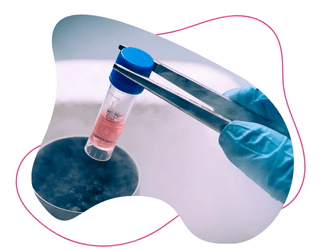As reported by PubMed and Colab, the age-standardized incidence rate of gastritis and duodenitis in 2019 was approximately 380 per 100,000 people, with a prevalence of around 518 per 100,000. This represents a 57% increase from 1990 to 2019, surpassing global population growth, as cases rose from 19.8 million to 31 million.

This innovative approach holds the potential to regenerate damaged gastric tissues and restore normal function
…If failing to care for one’s health is among the most frequent regrets at the end of life, should we not take the opportunity to prioritize our well-being today?
In the complex landscape of gastrointestinal disorders, the interplay between stem cells and gastric health emerges as a focal point of innovative research and clinical interest. Stem cells, as the body’s primary agents of repair, possess exceptional regenerative capacity, making them crucial in addressing conditions from gastritis to atrophic gastritis. With rising global prevalence and significant patient impact, understanding stem cell function in the gastric environment is essential for improving treatment outcomes.
Overview of Stem Cell Therapy in Gastroenterology

This article explores the role of stem cells in gastritis and atrophic gastritis, examining their function in gastric mucosal repair and the impact of chronic inflammation. It also investigates stem cell dysregulation during atrophic progression and their potential as biomarkers of disease severity. By analyzing regenerative therapy prospects and challenges, this discussion highlights the biological significance and therapeutic potential of stem cells, considering the gastric microenvironment, particularly the gut microbiome as a critical determinant of success.
Stem Cell Resilience and Microbiome Interactions in Gastric Healing
Understanding stem cell mechanisms in gastric repair reveals both their regenerative potential and vulnerability. Environmental factors such as diet, smoking, and chronic infection can alter stem cell function, impairing healing. Dysregulation of signaling pathways including Wnt, Notch, and Hedgehog further reduces regenerative efficiency.
Beyond cellular mechanisms, the gut microbiome plays a pivotal role in stem cell behavior. Beneficial microbial metabolites, like short-chain fatty acids, support proliferation and differentiation via Wnt/β-catenin signaling, whereas dysbiosis from H. pylori infection, antibiotics, or dietary imbalance fosters a pro-inflammatory environment that accelerates mucosal damage. Fostering both cellular resilience and microbial balance represents a comprehensive strategy to improve outcomes in gastritis patients.
Impact of Chronic Inflammation on Stem Cell Behavior
Chronic inflammation profoundly affects stem cell dynamics. Cytokines such as TNF-α and IL-6 can induce senescence, reducing self-renewal, while persistent inflammatory signals skew differentiation toward fibrotic rather than regenerative lineages. Patients with chronic gastritis exhibit reduced proliferative capacity and altered differentiation, increasing the risk of progression to atrophic gastritis. Targeting inflammatory pathways and restoring tissue-specific signaling may preserve regenerative function and improve gastric healing.
Stem Cell Dysregulation in Atrophic Changes
During atrophic gastritis progression, stem cell regenerative capacity diminishes, often shifting populations from actively proliferating to quiescent cells. The interaction between inflammatory mediators and stem cell function can create an environment where fibrotic processes dominate, exacerbating mucosal damage and increasing the risk of malignancy. Monitoring stem cell dynamics offers potential biomarkers for disease severity and informs innovative strategies to rejuvenate gastric repair.
Potential of Stem Cells as Biomarkers for Disease Severity
Beyond regeneration, stem cells serve as indicators of disease severity. Altered stem cell populations and elevated cytokines may stratify patients based on tissue damage and inflammatory response, facilitating personalized therapy. Early intervention guided by these biomarkers could prevent irreversible gastric damage, highlighting stem cells’ dual role in therapy and disease monitoring.
Microbiome Genomics as a Tool for Personalization
Microbiome genomics enables mapping of an individual’s microbial composition to uncover patterns linked to gastritis progression and impaired healing. At DNA GTx, this approach allows personalized therapeutic strategies, correcting microbial imbalances alongside stem cell interventions. Optimizing the gastric environment ensures stem cells operate at maximal regenerative potential
Future Directions in Gastritis Therapy: Integrating Stem Cells and the Microbiome
Stem cells are central to regenerative therapies, restoring mucosal integrity and counteracting cellular senescence. Recognizing stem cell dysregulation as a disease hallmark emphasizes their dual significance: as agents of repair and as biomarkers guiding personalized interventions.
Future strategies will likely combine stem cell therapy with microbiome-informed approaches, accelerating healing, reducing recurrence, and mitigating malignancy risk. Advances in iPSCs, targeted delivery systems, biomaterials, and 3D bioprinting will enhance therapy, but success depends on maintaining a healthy gastric ecosystem.
Conclusion
Innovative approaches at Stemwell Regenerative Medicine, including iPSCs, targeted delivery, advanced biomaterials, and 3D bioprinting, promise to enhance stem cell therapy for gastritis and its complications. Integrating these methods with microbiome optimization positions stem cell therapies as a transformative, personalized approach to gastric regeneration and long-term patient care
References
- Xu, Q., Liu, M., Meng, R., Zhao, Q., Men, X., Lan, Y., & Xu, H. (2023). Therapeutic effects and potential mechanisms of endoscopic submucosal injection of mesenchymal stem cells on chronic atrophic gastritis. Scientific Reports, 13, Article 20745. https://doi.org/10.1038/s41598-023-48088-3
- Rui, Q., Li, C., Rui, Y., Zhang, C., Xia, C., Wang, Q., Liu, Y., & Wang, P. (2024). Human umbilical mesenchymal stem cells ameliorate atrophic gastritis in aging mice by participating in mitochondrial autophagy through Ndufs8 signaling. Stem Cell Research & Therapy, 15, Article 491. https://doi.org/10.1186/s13287-024-04094-4
- Oh, J. D., Kling-Bäckhed, H., Giannakis, M., Engstrand, L. G., & Gordon, J. I. (2006). Interactions between gastric epithelial stem cells and Helicobacter pylori in the setting of chronic atrophic gastritis. Current Opinion in Microbiology, 9(1), 21–27. https://doi.org/10.1016/j.mib.2005.12.013
Ready to learn more about stem cell therapy?

At Stemwell, our team of doctors are highly skilled in successfully supporting thousands of people with a range of stem cell treatments. If you would like to learn more about stem cell therapy you can contact us with any questions, or apply today to check your eligibility.

